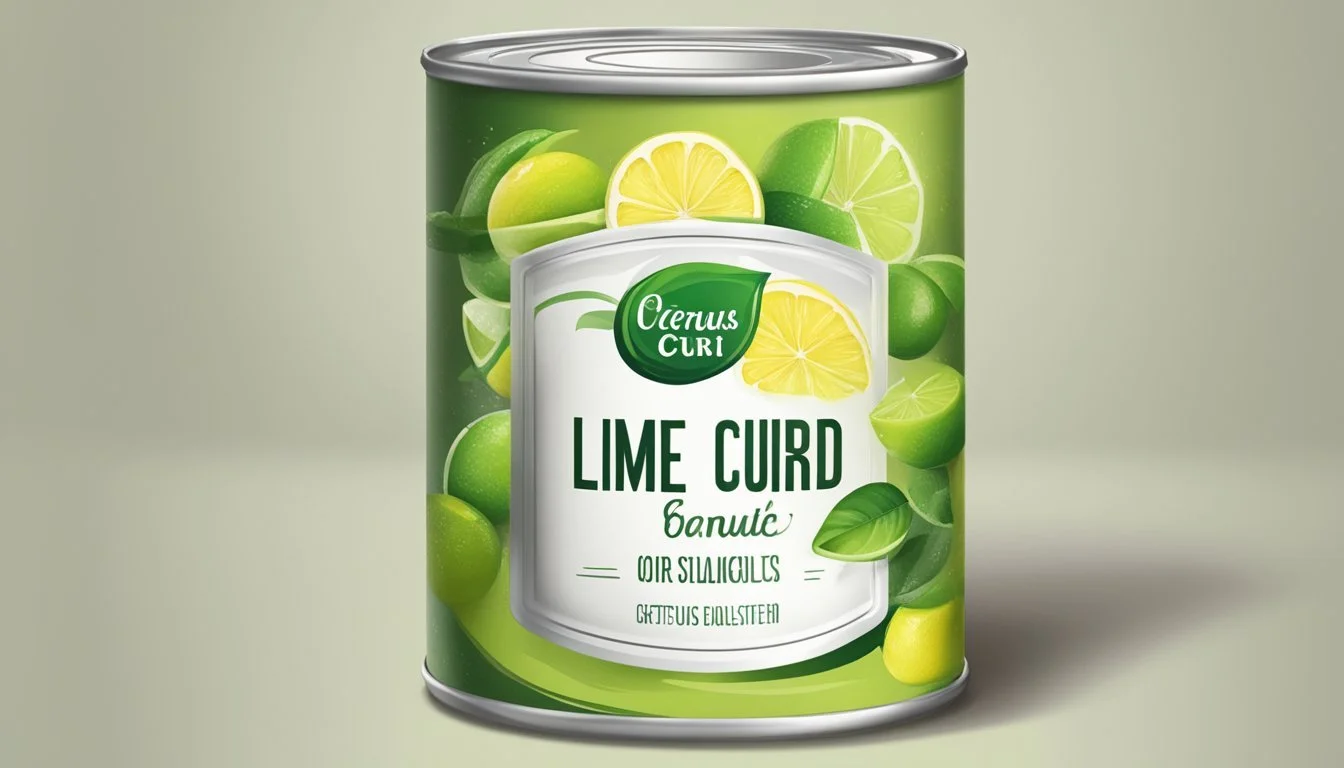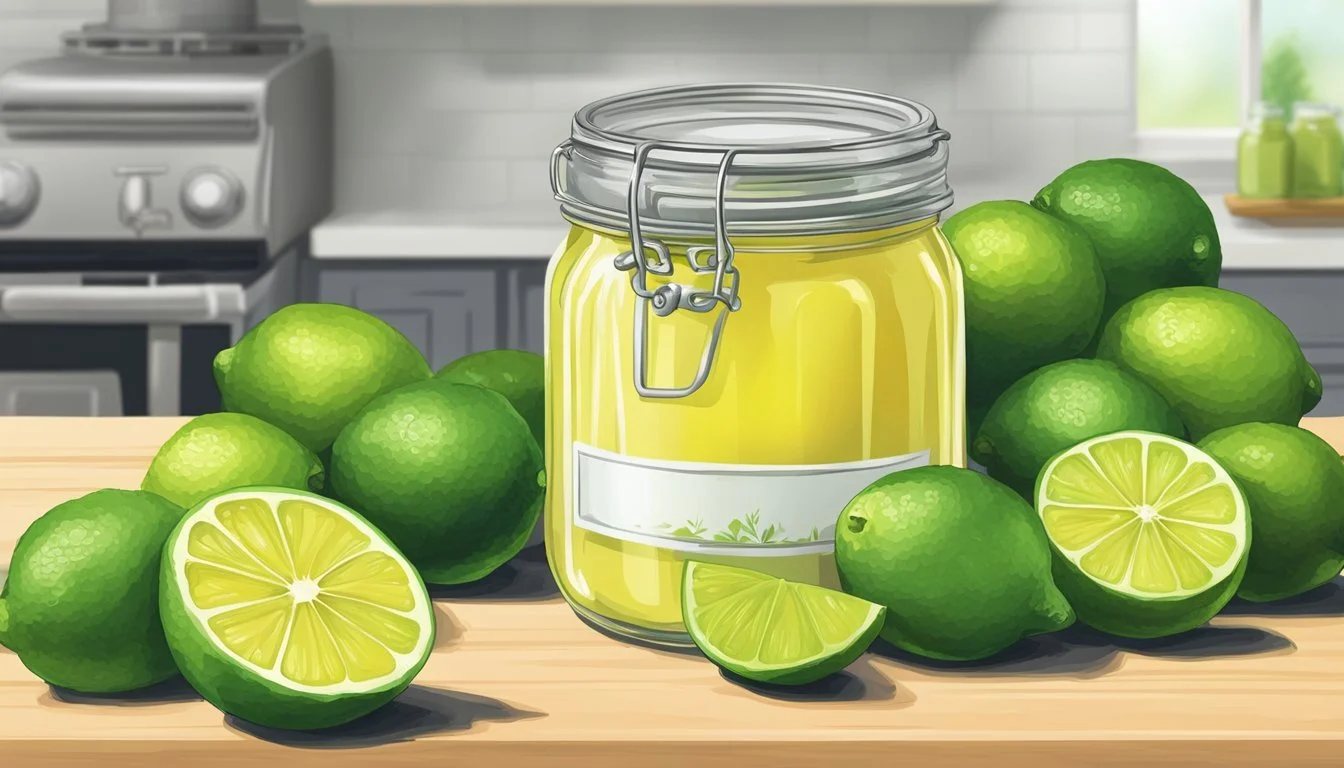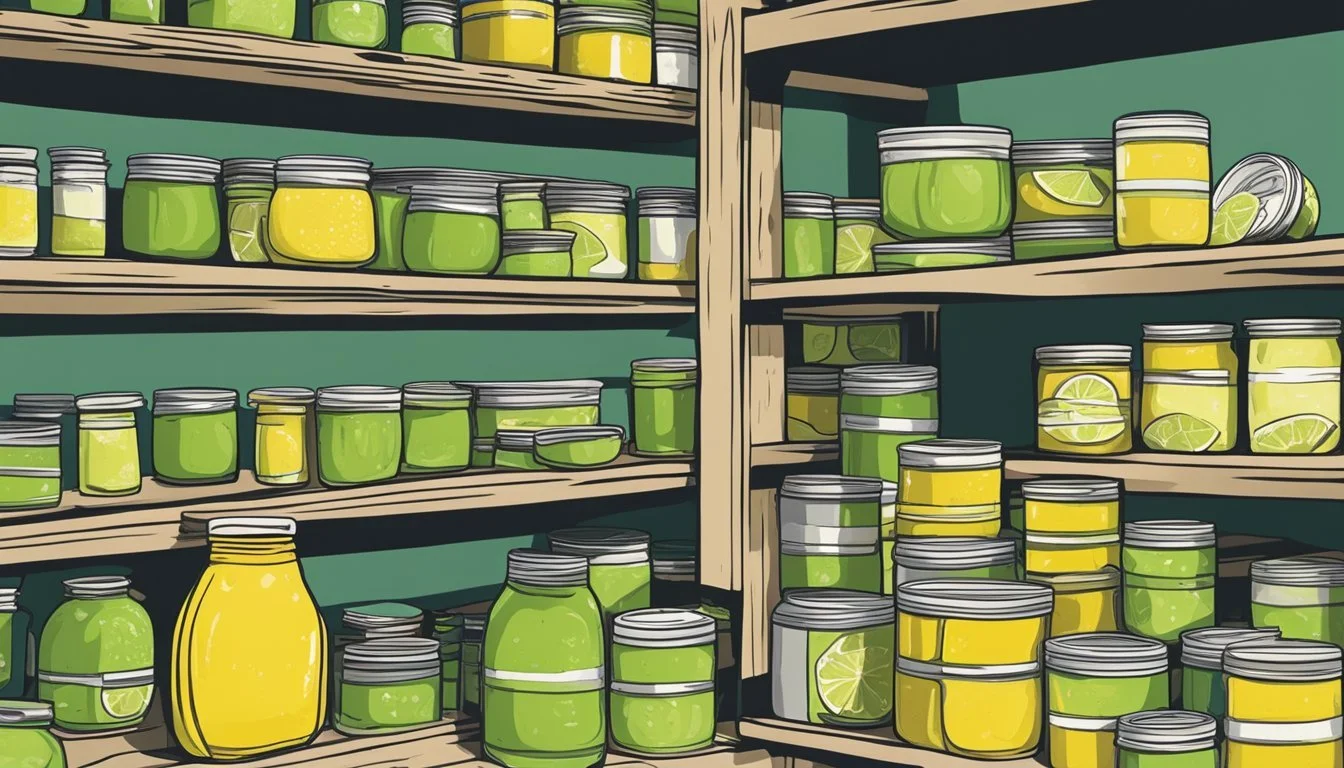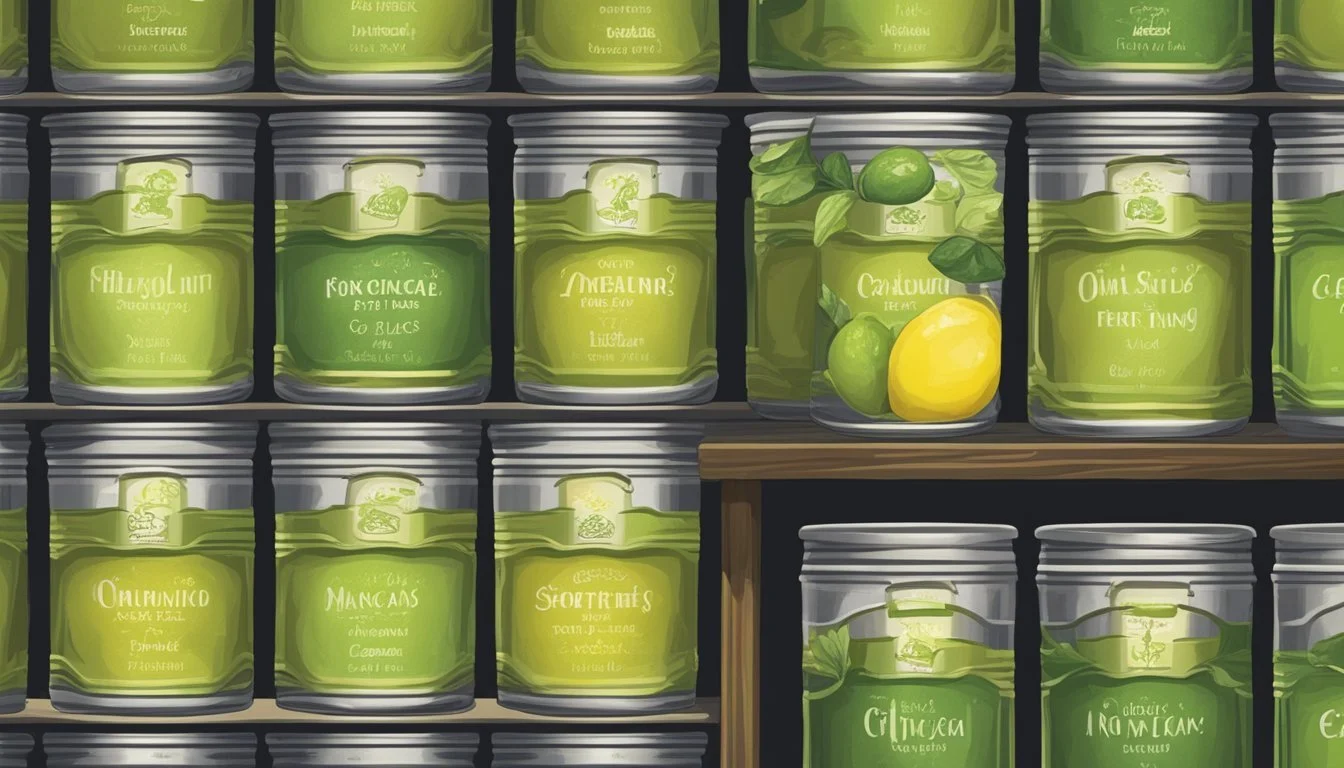Does Canned Lime Curd Go Bad?
Shelf Life and Storage Tips
Canned lime curd is a delicious and versatile spread, but many wonder if it can go bad. Yes, canned lime curd can go bad, especially if it is not stored properly. When sealed and stored correctly, it can last for a significant period. Typically, an unopened can of lime curd can last 2-3 weeks in the refrigerator. Once opened, the shelf life reduces to about 1-2 weeks.
Proper storage of canned lime curd is essential to ensure its longevity. Make sure to store unopened cans in a cool, dry place. Once opened, it's best to transfer the curd to an airtight container and keep it refrigerated. Additionally, for longer storage, lime curd can be frozen. Allow it to cool first, then pour into a freezer-safe container, where it can last up to a year.
Knowing when canned lime curd has gone bad is also crucial. Signs of spoilage include an off smell, discoloration, or a change in texture. If any of these are present, it is best to discard the curd immediately. Properly stored lime curd remains a delightful addition to many dishes, from toast to desserts.
Understanding Lime Curd
Lime curd is a versatile and delicious spread made from simple ingredients. It offers a zesty flavor and creamy texture that can be used in various recipes, from tarts to cakes.
Composition and Characteristics
Lime curd typically includes lime juice, eggs, sugar, butter, and lime zest. These ingredients are combined and cooked slowly until they thicken, resulting in a smooth and tangy curd.
The eggs provide the curd with its rich texture, while butter adds creaminess. Sugar balances the tartness of the lime juice. Zest enhances the lime flavor. When properly prepared, lime curd has a bright, citrusy taste and a luscious texture.
Homemade vs Store-Bought
Homemade lime curd allows for control over ingredients and taste adjustments. You can use fresh limes and high-quality butter. This version often has a fresher, more vibrant flavor compared to store-bought.
Store-bought lime curd is convenient and has a longer shelf life. However, it may contain preservatives or artificial flavors. The consistency is generally more uniform but might lack the freshness and zestiness of homemade versions.
Both have their merits, and the choice depends on personal preference and convenience.
Canning Lime Curd
Canning lime curd requires careful attention to the process and ensuring proper sealing and headspace to maintain quality. Detailed steps and important considerations are outlined to assist in achieving a safe and delicious canned product.
Canning Process
Start by combining sugar and lime zest in a bowl and let it sit for around 30 minutes. This allows the zest to infuse into the sugar, enhancing the flavor of the lime curd.
In the top part of the double boiler, heat this mixture gently. Meanwhile, whisk large egg yolks and whole eggs together until well blended.
Add pre-measured lime juice to the egg mixture and gradually combine it with the sugar-zest blend.
Place the top of the double boiler over simmering water and use a whisk or spatula to stir constantly. Heating should be gentle to avoid curdling.
Once the mixture thickens, strain it through a fine-mesh strainer to remove any lumps.
Sealing and Headspace Considerations
Pour the lime curd into sterilized half-pint jars, making sure to leave a 1/2 inch headspace at the top. This space is crucial for proper sealing during the canning process.
Wipe the rims of the jars clean before placing the canning lids on.
Seal the lids to fingertip tightness to ensure they are secure but not overly tight.
Process the jars in a water bath canner, where the water should start at 180°F and be brought to a gentle boil over the tops of the jars. Boil for 15 minutes before turning off the heat.
Remove the jars and allow them to cool completely. Check the seals by pressing the center of each lid; it should not flex up and down.
By following these steps, the lime curd will be properly canned and preserved.
Storage and Preservation
Proper storage and preservation techniques ensure the quality, safety, and enjoyment of canned lime curd. Several methods can extend its shelf life, whether it's stored in a pantry, refrigerator, or freezer.
Optimal Storage Conditions
For canned lime curd, storing in a cool, dark place is crucial. Optimal temperatures are between 50-70°F. This helps maintain flavor and texture. An airtight container prevents moisture and contaminants from compromising quality.
Humidity can impact storage, too. Keeping lime curd away from humid areas can prevent spoilage. Ensure jars are not overfilled to allow for proper sealing. Always label jars with the date of canning to monitor shelf life effectively.
Pantry storage is suitable for short-term preservation. However, for very long-term storage, refrigeration or freezing might be necessary.
Refrigeration and Freezing
Refrigeration extends the shelf life of lime curd to several weeks. Homemade lemon curd typically lasts up to 14 days in the refrigerator. For better preservation, ensure the container is airtight to avoid absorbing fridge odors.
Freezing offers a much longer preservation method. Lime curd can be stored in a freezer-safe container for up to one year. A freezer bag can also work, provided all air is removed before sealing. When ready to use, thaw in the refrigerator to maintain consistency.
Remember to avoid refreezing lime curd after thawing as it affects texture and taste.
Shelf Life Indicators
Knowing the signs of spoilage is vital for safety. If lime curd develops an off-smell, discoloration, or mold, it should be discarded.
Texture changes, such as separation or excessive liquid, can indicate that the curd is past its prime. Taste is also a good indicator; any sour or unusual flavors suggest it is no longer safe to consume.
Always trust your senses and follow storage guidelines provided by trusted sources like the National Center for Home Food Preservation. By adhering to these standards, you ensure the longevity and quality of your canned lime curd.
Practical Uses and Recipes
Lime curd is a versatile ingredient that can enhance various dishes with its tart and tangy flavor. From incorporating it into cooking recipes to using it as a creative topping, lime curd adds a refreshing twist to many culinary creations.
Utilizing Lime Curd in Cooking
In baking, lime curd serves as a flavorful filling for cakes, tarts, and pastries. It can be used between layers of sponge cakes or piped into éclairs and cream puffs for a burst of citrus flavor.
Lime curd is a perfect addition to breakfasts. Spread it on toast, scones, or pancakes for a tangy alternative to traditional spreads.
For a savory twist, lime curd can be paired with grilled meat or fish. The acidity of citrus juice cuts through the richness of the meat, creating a balanced dish.
Creative Serving Suggestions
When making homemade gifts, lime curd can be jarred and decorated with ribbons. Labels indicating the use of fresh lime juice and zest make the gift more personal.
As a topping, lime curd shines on cheesecakes and ice creams, offering a zesty contrast to the creamy base. It can also be swirled into Greek yogurt or used as a dip for fruit platters, adding an elegant touch to any gathering.
Incorporate lime curd into cocktails for a citrusy kick. It blends well with gin and vodka-based drinks, providing a unique flavor profile.
Whether used in elaborate dishes or simple snacks, lime curd brings an exciting and refreshing dimension to culinary experiences.
Troubleshooting Common Issues
When working with canned lime curd, several issues can arise, such as difficulties during the canning and sealing process, as well as challenges with texture and consistency.
Canning and Sealing Challenges
Proper canning and sealing of lime curd are essential to ensure its longevity and safety. Overfilled jars can prevent proper sealing. Always leave about 1/2 inch of headspace. This allows for expansion during the canning process. Air bubbles trapped in the curd can also compromise the seal. Use a non-metallic utensil to release them before sealing.
Sealing issues might result from lids not being tightened properly. The lids should be tightened to fingertip tightness, not too loose, and not overly tight. Metallic taste in the canned product can occur if the curd has prolonged contact with metal containers or lids. It's important to use non-reactive materials to avoid this problem.
Texture and Consistency Problems
The texture of lime curd should be smooth and creamy. Overcooking can result in a grainy or scrambled texture. To achieve the ideal consistency, cook the curd over low to medium heat, stirring constantly without allowing it to boil vigorously.
Thickness can also be an issue. If the curd is too thin, it might not have been cooked long enough. Conversely, if it is too thick, it could be overcooked.
Storing the curd improperly can affect texture over time. Keeping it in a cool, dark place helps maintain the desired consistency. Metallic taste can again be an issue due to improper storage containers, so it's crucial to use glass jars with non-reactive lids.
Advanced Topics in Lime Curd Preservation
Understanding the nuances of lime curd preservation involves knowledge of both acid and pH balance, as well as advanced storage techniques that ensure long-term quality and safety.
Acid and pH in Canning
The acidity of lime curd is crucial for safe preservation. Lime juice provides the necessary acid, lowering the pH to a level that inhibits bacterial growth. Bottled lemon juice can be added to ensure consistent acidity, a common practice recommended by the University of Georgia.
Acid levels can be measured using a food thermometer and pH strips. Maintaining a pH below 4.6 is essential. Zesters help extract maximum zest, contributing to flavor and acidity. Use a boiling water canner and precise processing times to achieve a safe seal.
Extended Storage Techniques
Properly stored lime curd can last for months. Use sterile half-pint jars, leaving a 1/2 inch headspace. The National Center for Home Food Preservation recommends water bath canning at 180°F to ensure a proper seal.
Sealed jars should be checked regularly for signs of spoilage. Store in a cool, dark place, like a pantry. Labels with the processing date help monitor expiration dates. Additional kitchen tools like a kitchen thermometer help maintain storage conditions, ensuring the curd stays safe and delicious.
Implementing these techniques, combined with strict adherence to safety guidelines, ensures that lime curd remains fresh and safe for consumption over extended periods.






